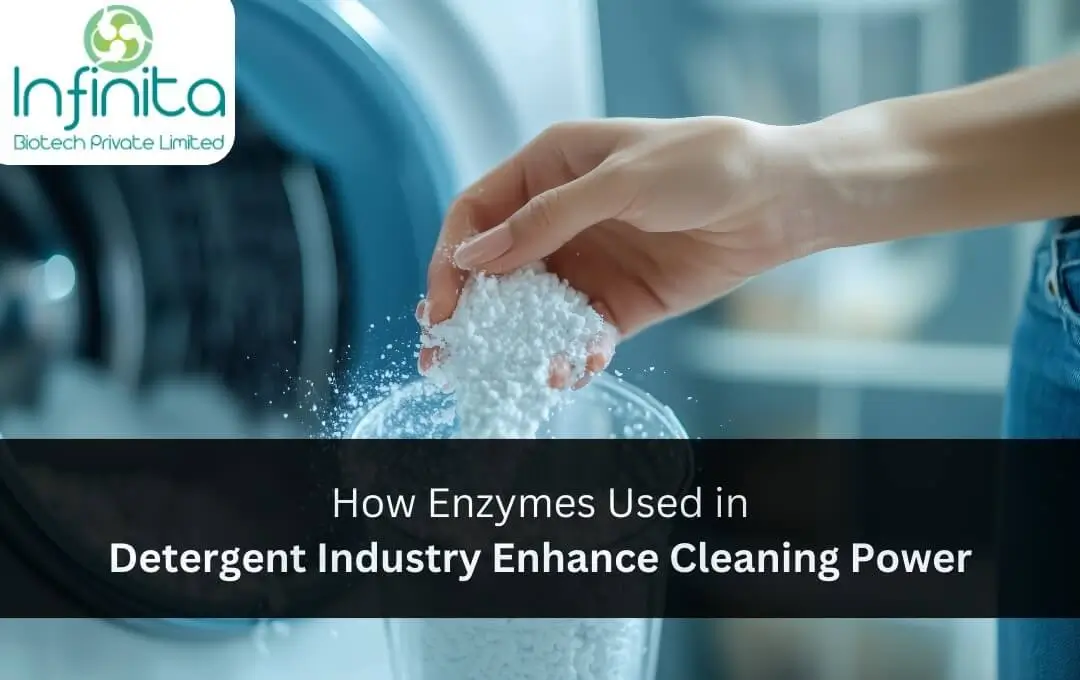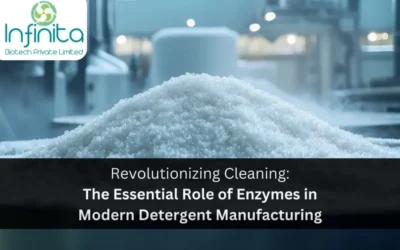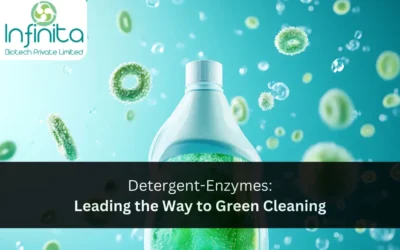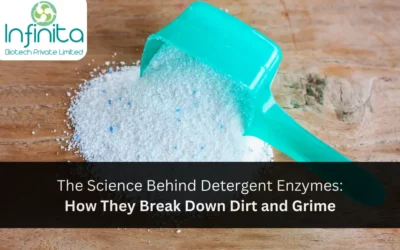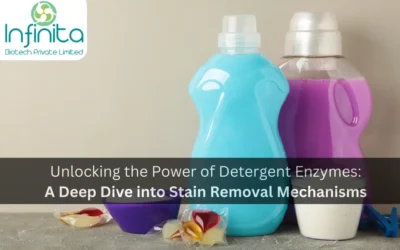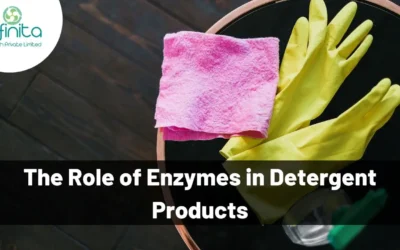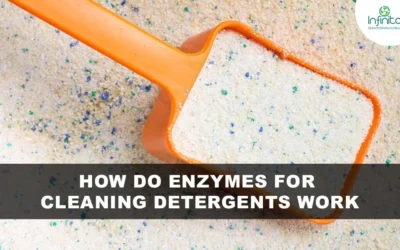Introduction to Enzymes in Detergents
Enzymes are remarkable biological catalysts that facilitate various chemical reactions, including the breakdown of complex substances into simpler forms. In the context of the detergent industry, these enzymes play a pivotal role in enhancing cleaning power. By breaking down stains and grime at a molecular level, enzymes have transformed the way we approach laundry and household cleaning, making it more efficient and effective.
Types of Enzymes in Detergents
Several types of enzymes are commonly utilized in detergents, each serving a specific purpose.
Proteases
Proteases are enzymes that break down proteins, making them ideal for tackling protein-based stains like blood, sweat, and food residues.
Amylases
Amylases target starches, effectively breaking them down into simpler sugars. This capability is particularly useful for removing stains from foods like sauces and gravies.
Lipases
Lipases specialize in breaking down fats and oils. They are essential for removing greasy stains from various surfaces, including fabrics and dishes.
Cellulases
Cellulases act on cellulose, the primary component of plant cell walls. They help maintain fabric quality while enhancing cleaning efficiency.
The Science Behind Enzyme Action
Mechanism of Action
Enzymes work by binding to specific substrates—in this case, the stains on fabrics or surfaces. They catalyze a reaction that breaks down the stain molecules, making them easier to wash away. This process not only enhances cleaning power but also ensures that less harsh chemical agents are required.
Conditions Affecting Enzyme Activity
Enzyme activity can be influenced by several factors, including temperature, pH, and concentration. Optimal conditions ensure maximum efficacy, which is why many modern detergents are formulated to maintain these conditions throughout the washing process.
Benefits of Using Enzymes in Detergents
The incorporation of enzymes into detergents offers a myriad of benefits.
Improved Stain Removal
Enzymes significantly enhance stain removal capabilities, allowing for cleaner clothes and surfaces. Their ability to break down stains at a molecular level means less scrubbing and better results.
Energy and Water Savings
Using enzyme-based detergents often allows for effective cleaning at lower temperatures. This energy efficiency not only saves money but also conserves water, contributing to more sustainable cleaning practices.
Eco-Friendly Cleaning Solutions
Enzyme-based detergents tend to be more environmentally friendly compared to traditional chemical cleaners. They reduce the need for harsh chemicals, minimizing the ecological impact while still delivering powerful cleaning results.
Proteases: The Stain Fighters
How Proteases Work on Protein Stains
Proteases effectively hydrolyze peptide bonds in proteins, breaking them down into smaller peptides and amino acids. This action is particularly beneficial for stains from organic sources, such as food or bodily fluids.
Applications in Laundry Detergents
Many laundry detergents now contain proteases to target protein-based stains specifically. This addition enhances the overall cleaning efficacy, making it easier to achieve spotless results without excessive washing.
Amylases: Tackling Starch-Based Stains
Role of Amylases in Cleaning
Amylases break down complex carbohydrates, converting them into simpler sugars. This process is crucial for removing starchy stains found in food products like pasta or potatoes.
Effectiveness on Food Stains
Stains from food often contain starch, making amylases an essential component of effective cleaning formulations. Their ability to target these stains ensures a more thorough clean, reducing the need for multiple washing cycles.
Lipases: Breaking Down Fats and Oils
Mechanism of Lipases in Detergents
Lipases work by hydrolyzing triglycerides found in fats and oils. This action converts these substances into free fatty acids and glycerol, making them easier to wash away.
Importance for Greasy Residues
For households dealing with greasy dishes or oily fabrics, lipases offer a powerful solution. Their inclusion in detergents ensures that tough, greasy stains are effectively removed, leading to cleaner results.
Cellulases: Enhancing Fabric Care
Benefits of Cellulases in Detergents
Cellulases help maintain the quality of fabrics by breaking down cellulose fibers that can accumulate over time. This action not only enhances cleaning but also preserves the integrity of the fabric.
Effect on Fabric Longevity
By preventing the buildup of residues, cellulases contribute to longer-lasting fabrics. This longevity is particularly valued in the fashion and textile industries, where fabric care is paramount.
Consumer Preferences and Trends
Growing Demand for Enzyme-Enhanced Products
As consumers become more aware of the benefits of enzyme-based cleaning solutions, the demand for these products has risen. Many seek effective, eco-friendly alternatives to traditional cleaning agents.
The Shift Towards Green Cleaning Solutions
The trend towards sustainability has propelled the development of greener cleaning products. Enzyme-based detergents are at the forefront of this movement, appealing to environmentally conscious consumers.
Challenges in Enzyme Use
Stability and Storage Concerns
Enzymes can be sensitive to temperature and humidity, potentially affecting their efficacy. Proper formulation and packaging are essential to ensure that enzymes remain stable and effective over time.
Cost-Effectiveness of Enzyme-Based Detergents
While the initial costs of enzyme production can be higher, the overall savings from reduced energy and water usage often outweigh these costs. Consumers must be educated on the long-term benefits of using enzyme-enhanced products.
Future Innovations in Enzyme Technology
Advances in Biotechnology
Ongoing research in biotechnology promises to yield even more efficient and stable enzymes for use in detergents. These innovations will further enhance cleaning power while maintaining eco-friendliness.
Customization of Enzymes for Specific Applications
The future of detergent formulation may involve customized enzyme blends tailored to specific cleaning challenges. This personalization will allow for even more effective cleaning solutions.
Conclusion
Enzymes have revolutionized the detergent industry, providing enhanced cleaning power while promoting sustainability. With their ability to break down complex stains, enzymes such as proteases, amylases, lipases, and cellulases are vital for effective cleaning solutions. As consumer preferences shift towards greener products, enzyme-based detergents will continue to lead the way, offering powerful performance with a reduced environmental impact. The future of cleaning technologies is bright, with enzymes at the forefront of innovation and efficiency.
